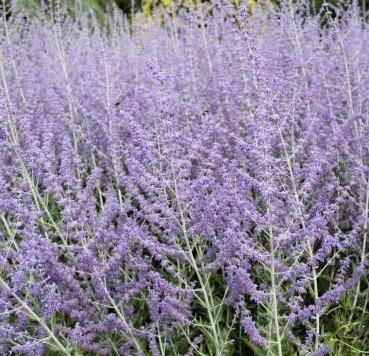Russian Sage

Did you know?
Russian Sage plants (Perovskia atriplicifolia) are neither Russian, nor sage. Russian sage and true sage (Salvia) plants are both in the mint family - Lamiaceae - but there are key differences between the two that can help you tell them apart. Salvias have rounded leaves, a color variety from white to dark purple, dense flower clusters that bloom throughout the summer, and they can grow to be approximately 2 feet tall. Russian Sage has fern-like leaves, uncrowded purple flowers that bloom from mid-summer to mid-autumn, and can grow to be approximately 5 feet tall.
Size
Up to 5 feet tall
Flowers, Fruit, Foliage
Fragrant, violet-blue flowers bloom on tall panicles from mid-summer through mid-autumn. Stems are slightly square-shaped and covered in very fine, white hairs. Small, gray-green leaves are fragrant when bruised or crushed.
Pests & Diseases
None serious
Landscape Use
Great as a specimen, border, massing, or small hedge
Care Practices
Plant in medium to dry soil in an area with full sun. These plants tolerate drought and salinity, but they cannot tolerate wet soils or extremely cold temperatures. Prune to the ground in early spring.
Native Range
From Afghanistan to Tibet





